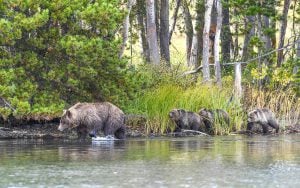
Wildlife
Do not disturb: Practicing ethical wildlife photography
Wildlife photographers on the thrill of the chase — and the importance of setting ethical guidelines
- 2849 words
- 12 minutes
This article is over 5 years old and may contain outdated information.
People & Culture

125 countries. 5,034 photographers. 80,408 images. This year’s World Press Photo Contest drew entries from around the world, and following an intensive judging process, has announced the 45 winning photographers.
Among them was Albertan photographer Amber Bracken, whose work has previously appeared in Canadian Geographic. Two other Canadian photojournalists – Darren Calabrese and Giovanni Capriotti – were also awarded prizes.
The jury gave prizes in eight categories: Contemporary Issues, Daily Life, General News, Long-Term Projects, Nature, People, Sports and Spot News. This is the contest’s 60th year.
The World Press Photo 2017 Exhibition will be visiting Canada via Montreal and Chicoutimi from August 30 to Oct. 1 and Oct. 20 to Nov. 12, respectively.
Below is a selection of the winning images.














Are you passionate about Canadian geography?
You can support Canadian Geographic in 3 ways:

Wildlife
Wildlife photographers on the thrill of the chase — and the importance of setting ethical guidelines

People & Culture
Tour of winning images to make four Canadian stops, starting July 20 at the Canadian War Museum in Ottawa

People & Culture
These 10 members of Canadian Geographic’s online Photo Club are making waves with their unique perspectives on Canadian wildlife and landscapes

People & Culture
Annual contest winners reflect a turbulent year in international affairs and the natural world